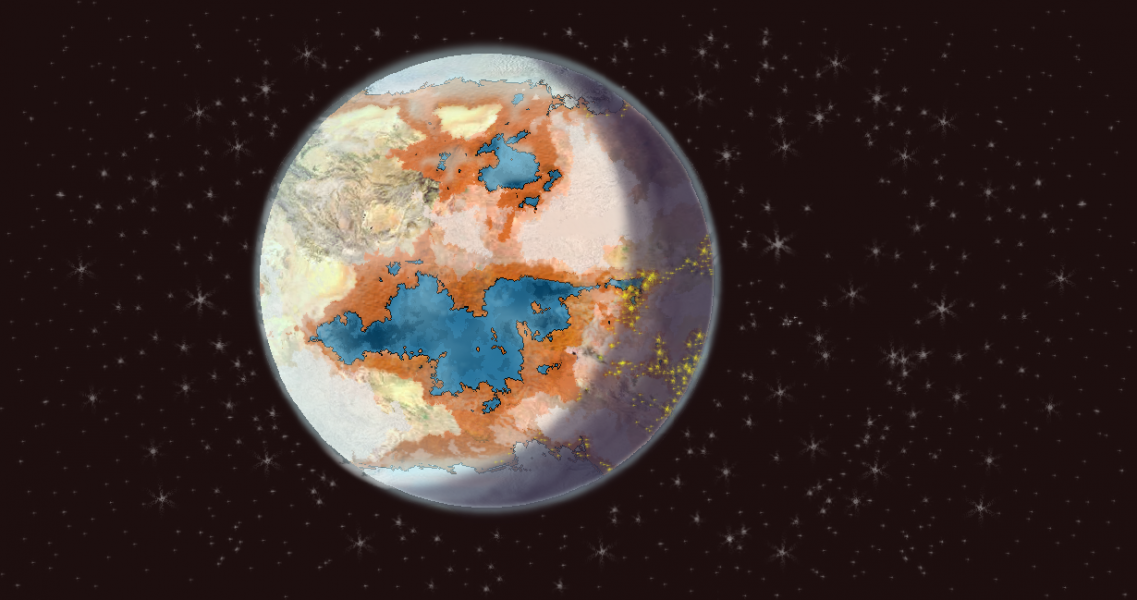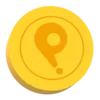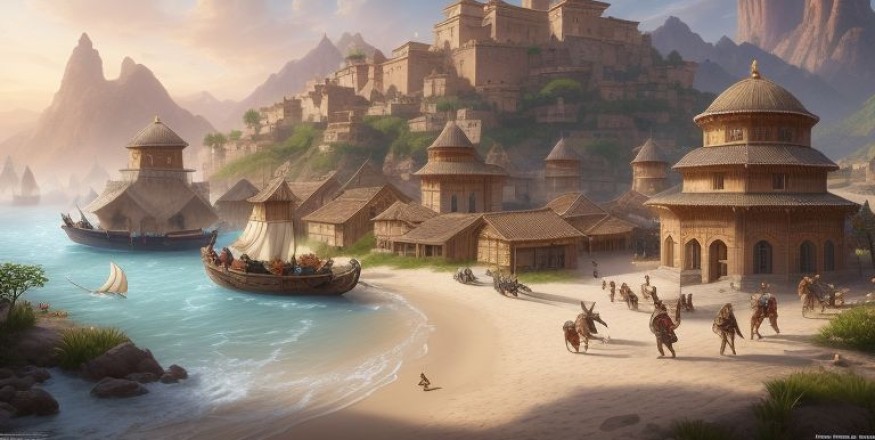 x
x
The feeling of awe produced by such a sight is indescribable: a star, which only yesterday was a brilliant speck among the multitude of nameless specks in the firmament, showed up more and more clearly against the black background, assumed a dimension in space, appearing first of all as a sparkling nut, then swelled in size, at the same time becoming more definite in color, so that it resembled an orange, and finally it fell into place in the cosmos with the same apparent diameter as our own familiar morning star. A new sun was born for us, a reddish sun, like ours when it sets, the attraction of warmth that we could already feel.
Our speed was then very much reduced. We drew closer still to Chang-Er, until its apparent diameter far exceeded that of all the celestial bodies hitherto seen, which made a tremendous impression on us. Kaminski gave some instructions to the robots, and we began gravitating around the red giant. Then the scientist took out his astronomical instruments and began his observations.
It was not long before he discovered the existence of four planets whose dimensions he rapidly determined, together with their distances from the main principal star. One of these, 2 away from Chang-Er, was moving on a trajectory parallel to ours. It was about the same size as Earth; it had an atmosphere containing oxygen and nitrogen; it revolved around Chang-Er at a distance equivalent to 30 times the space between Sol and the Earth, receiving a radiation comparable to that received on our own planet, thanks to the size of the red giant combined with its relatively low temperature.
We decided to make it our first objective. After fresh instructions were given to the robots, our craft was quickly put into orbit around it. Then, with our engines powered down, we observed this brave new world at our leisure. The telescope revealed its oceans and continents.
The craft was unequipped for a landing, but this eventuality had (fortunately) been provided for. We had at our disposal three much smaller rocket machines which we called launches. It was in one of these that we embarked, taking with us some measuring instruments and Nikolai, the chimpanzee, who was equipped as we were with a spacesuit and had been instructed in its use. As for our ship, we just let it revolve around the planet. It was safer than a liner lying at anchor in a harbor, and we knew it would not drift an inch from its orbit.
Landing on a planet of this kind was an easy operation with our launch. As soon as we had penetrated the thick layers of the atmosphere, Professor Kaminski took some samples of the native air and analyzed them. He found they had the same composition as the air on Earth at a similar altitude. I barely had time to ponder on this shocking coincidence, for the ground was approaching rapidly; we were no more than fifty miles or so above it. Since the robots carried out every maneuver, I had nothing to do but press my face to the porthole and watch this alien world rising towards me, my brain reeling with the thrill of discovery.
The planet bore an eerie resemblance to Earth. This impression became clearer every passing second. I could now make out the outline of the continents with my naked eye. The atmosphere was bright, slightly tinged with a pale green color verging from time to time on yellow, rather like our sky in Crimea at sunset. The ocean was light blue, with some nuances of pale green. The form of the coastline was very different from anything I'd ever seen back home, although my frantic eye, conditioned by numerous analogies, insisted wildly on discerning similarities even there. But there the resemblance to Earth ended. Nothing in the planet's topography recalled either the Eastern or Western Hemispheres.291Please respect copyright.PENANANjdWUfs9xU
Nothing? Why, nonsense! Quite the opposite, the essential factor! The planet was inhabited. We flew over a town, a fairly big one, from which roads radiated, bordered with trees and vehicles moving along them. I had time to make out the general architecture: malls planted with thousands of trees, two-lane roadways, and white houses with long straight lines.291Please respect copyright.PENANAQVTR9Y0tS3
However, we were to land a long way further off. Our flight swept us first over houses (rather scattered affairs, many of them seeming to be small farms), then over a thick russet-colored forest that called to mind the Amazonian and Congo Basins. We were now cruising at a very low altitude. We caught sight of a fairly large clearing occupying the top of a plateau, the surrounding terrain being rather broken. Our leader decided to attempt a landing there and gave his last orders to the robots. A battery of retrorockets kicked into action. We hovered motionless for a moment or so above the clearing, like a seagull spotting a fish.
Then, two years after leaving our mother Earth, we came down gently and landed with a jolt in the middle of the plateau, on green grass reminiscent of our meadows near Moscow.
291Please respect copyright.PENANAOraIrmj7Q8
ns18.216.202.61da2 





















